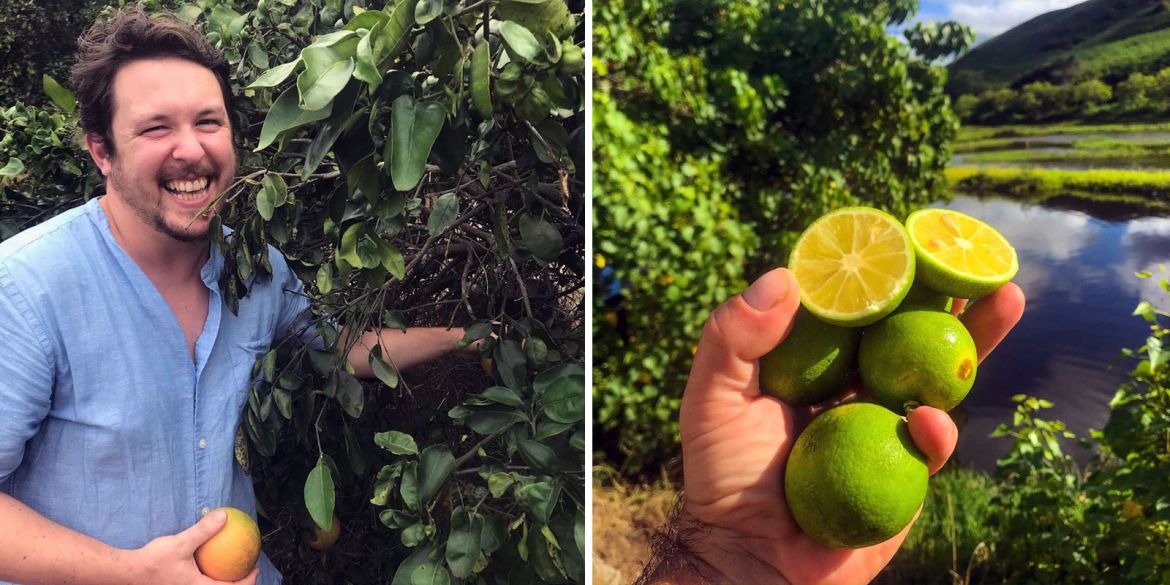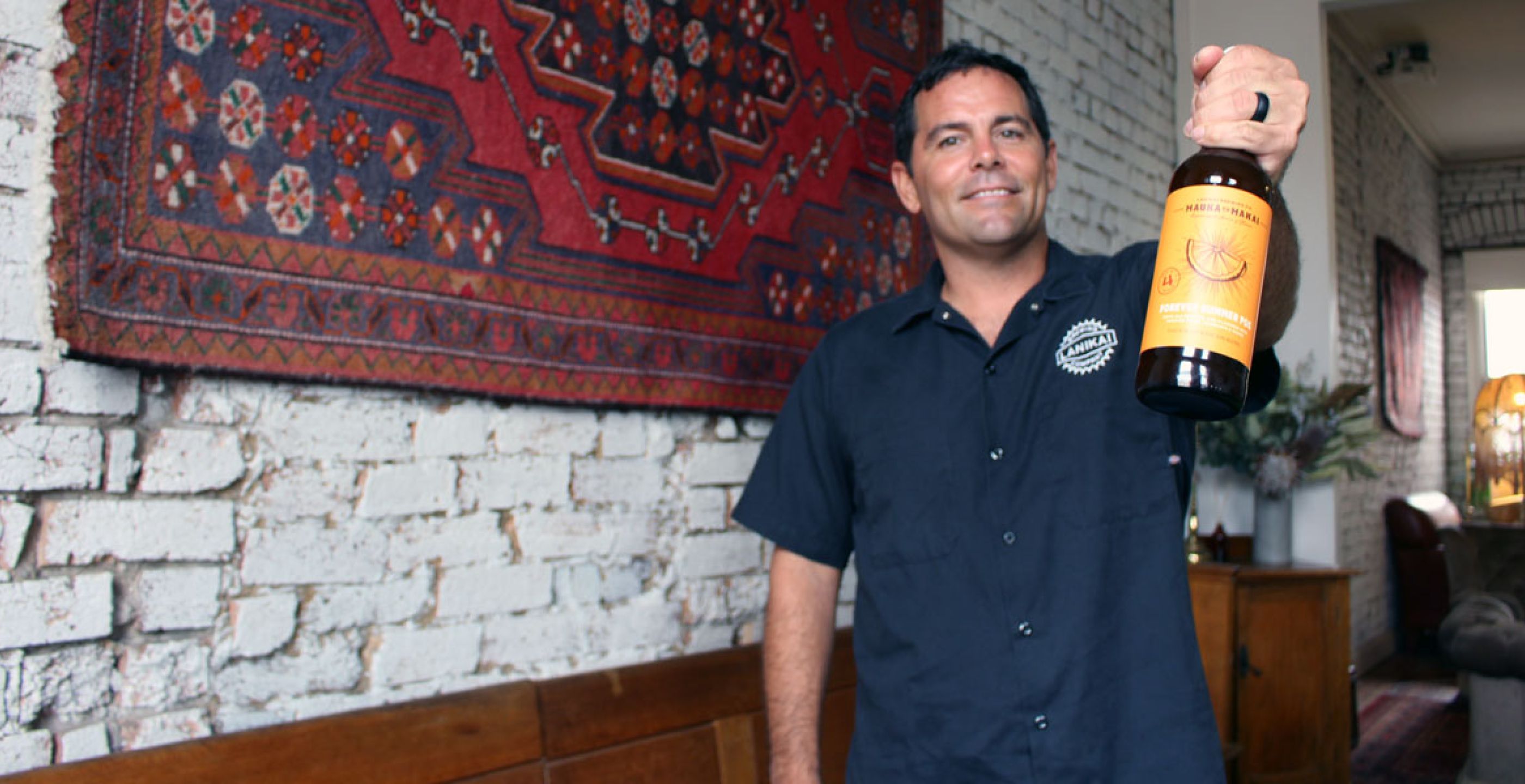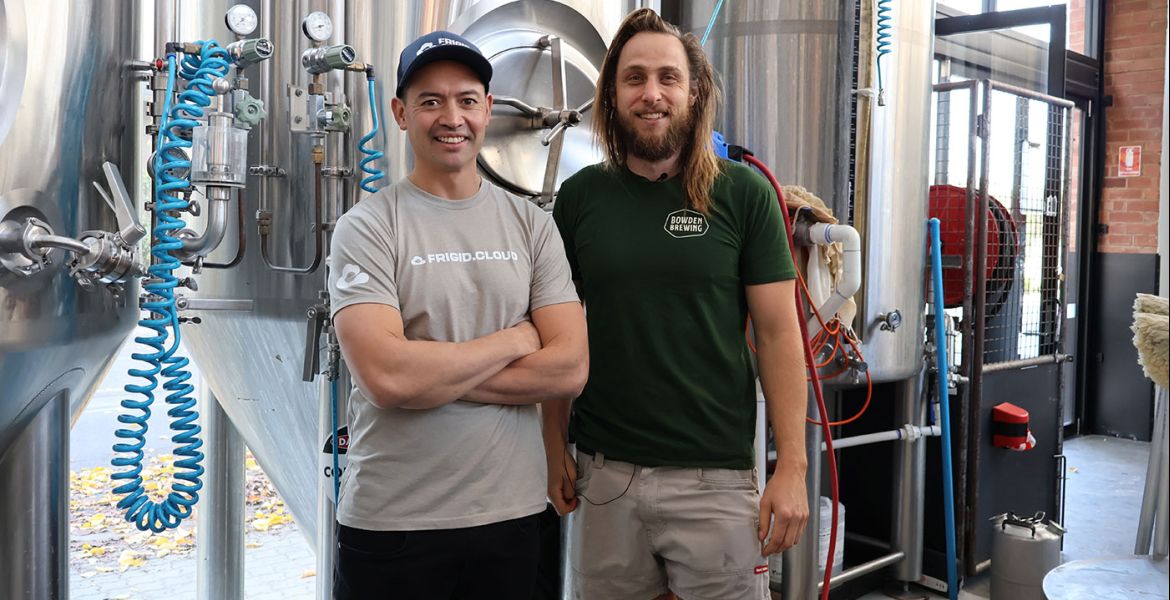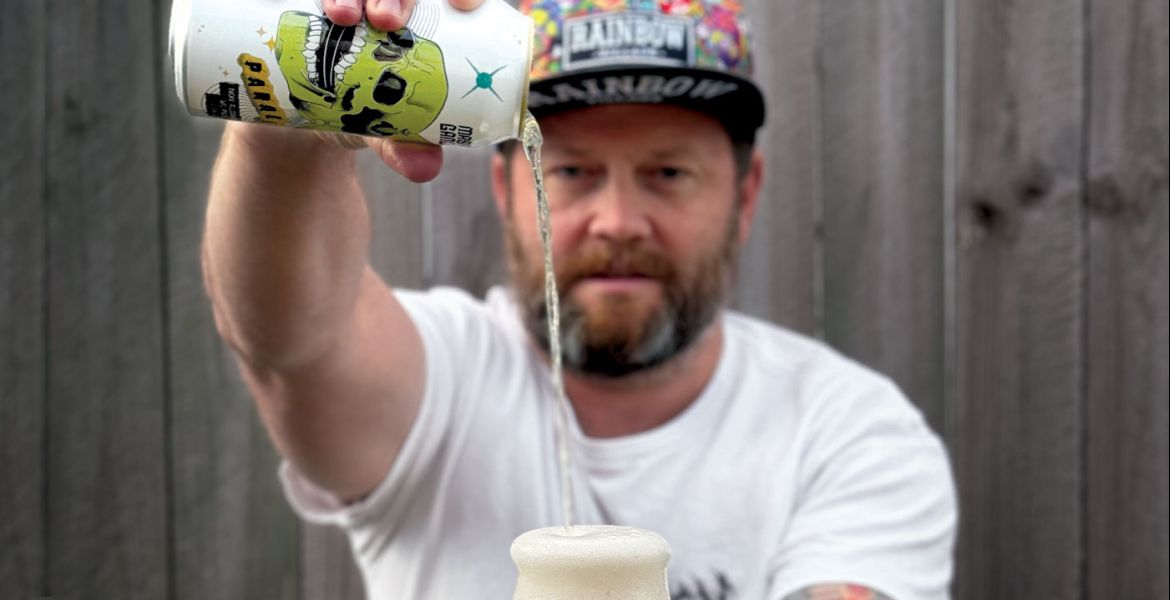Many Australians share a collective idea of Hawaii being purely about beaches and great surf but, just as we frequently remind tourists coming to these shores expecting little more than beaches and life-threatening beasts, there’s a lot more diversity to behold.
From blizzard-hit volcanic peaks to dense rainforests, the state is flush with different wildlife and ecosystems. In fairness, there’s a lot of coast too. And it’s that diversity Steve Haumschild (pictured above), co-founder and head brewer at Lanikai Brewing, quite literally captures in his beers.
“We try to say we’re an authentic Hawaiian beer company,” he says. “What that means to me is, if you make an IPA in Hawaii, it doesn’t make it a Hawaiian IPA."
Steve says he personally forages for close to 30 percent of the ingredients used in his beers, with that bounty including flowers, roots and the wild yeasts used in Lanikai’s sour beers. Often, the fruits used in those beers are those closely associated with Pacific islands but Steve says he tries to showcase many native Hawaiian ingredients that are rarely used in the culinary world and, as we'll get to later, isn't averse to plundering the heavens either.
“When most people think of Hawaii, they think about coconut and pineapple for the most part,” he says. “And we do use those sometimes, but then there’s something like Buddha’s Hand, a citrus-looking flower that tastes like a lemon drop candy.”
Lanikai opened in 2015 and is named after the beachside community Steve calls home, with "Lani" meaning heaven and "Kai" meaning sea. While it’s far from the first craft brewery in Hawaii, Steve sees their focus on local produce, seasonality and terroir as setting them apart.
“When I travel somewhere, I want to try the local food and local drinks and I didn’t really feel like we had that in Hawaii,” he says.
“There’s a lot of great breweries in Hawaii and most of them stay true to style because they want that consistency. But, for us, we’re trying to represent a time and a place and that time and a place is Hawaii and the growing seasons.”

It means any beer recipe starts with whatever ingredients they can get their hands on. Lanikai’s imperial IPA includes pikake flowers, a member of the jasmine family that’s often used in perfumes or to make leis. Consistency might drive many breweries but, for Steve, he prefers an approach more in tune with agriculture, where different growing seasons effect what’s in the glass.
“Mango will be sweeter this season compared to next season, so that might reflect in the beer even if we make it in the same way,” he says. “When we run out of the ingredients we’re making that style with, because it’s very seasonal, we just stop making that beer.”
There are, of course, limitations to that approach. Hawaii might be full of local fruit but the cost of land and climate makes barley and hop growing better left to mainland America but, Steve says, every beer Lanikai makes has Hawaiian produce in it.
Often, part of that makeup is from the yeast and bacteria, with Hawaii’s diverse ecology giving Steve plenty of room to explore. He has somewhere between 100 to 125 yeast strains he’s picked up from volcano edges to rainforests by the ocean. Some bacteria he uses for quick sours while the Hawaiian Wild Ales are spontaneously fermented and can spend years in barrel. For the latter, Steve relies on a portable coolship, designed to fit inside a shipping container so he can transport it across the state.
“We take it to other islands and I’ll call up friends who own breweries on those islands and they’ll make the wort for me,” he says.
Catching that wild yeast and bacteria is a process Steve refers to as bio-prospecting: the hunt for suitable brewing yeasts that has a success rate that varies widely.

“When you go into nature and coolship in the middle of a jungle, your certainty level is going down dramatically,” he says, adding his failure rate was somewhere around 90 percent when he started Lanikai’s wild program.
“You’re getting a mixed population of things and you have no clue of what’s in there and they may not fire off.”
That process of bio-prospecting is one that took Lanikai’s beers far away from their typical origin and into space. Using an "Unidentified Fermenting Object” that was collected at 70,000 feet in the air, Lanikai brewed an Interplanetary Ale, a beer that gave the brewery widespread attention when it was released in July just in time for the 50th anniversary of the moon landing.
It might seem like a wild departure from focusing on the terroir of Hawaii but Steve says a few chance encounters proved too appealing to miss for a science nerd who’d held a long fascination with space.
NASA regularly runs scientific programs on Hawaii and, after meeting two research pilots, he got talking to them about brewing in space. Steve let the pilots know he was keen to see what kind of yeast could be collected on their next research flight and the trio spent the night dissecting the problems they’d have to come: how best to grab any yeast that might be living in dust or water particles in the earth’s stratosphere; would anything survive the journey back? How could they be sure what they collected was even from the stratosphere?
“We looked at each other at the end of that night of drinking and said, ‘This probably isn’t going to work but let’s do it anyway.’ It’s in that spirit of exploration.”
During their next research flight, the two pilots opened up the petri dish at 70,000 feet, brought it back to earth and sent it off to be independently verified at Mainiacal Yeast Labs in Maine. Two different yeasts survived the journey home but Steve says only one was right for brewing beer.
“We could identify its lineage and its families and there were enough characteristics within there that we knew it was safe for human consumption, that it would produce alcohol and it would produce flavour. That was enough to make a beer with.”
Steve describes the Interplanetary Ale as starting off smelling strongly like sourdough yeast before picking up funky and overripe tropical fruit like qualities. He's not done with the alien yeast either: they're currently testing how stable it can be while packaged and what other styles he can brew with it, saying the UFO particularly loves acids in beer.
"We recently rebrewed with it a few weeks ago. This time we made more of a saison style and instead of using alpha acids from hops we threw lime zest on there to see how it would handle the different acid. In packaging, the flavour continues to change and every keg is tasting different [based on its age]. This particular thing can survive at freezing temperatures so being in our cold room does nothing to it.
"It's constantly evolving on us."
While there’s no space beers landing anytime soon, Lanikai Brewing’s beers are currently available in Australia through Northdown, Craft Beer Movement.

















